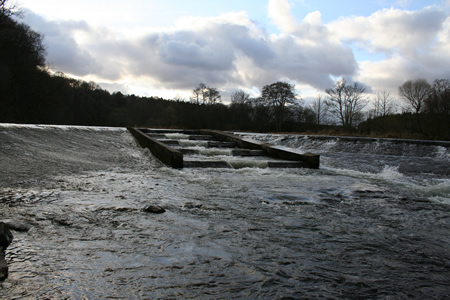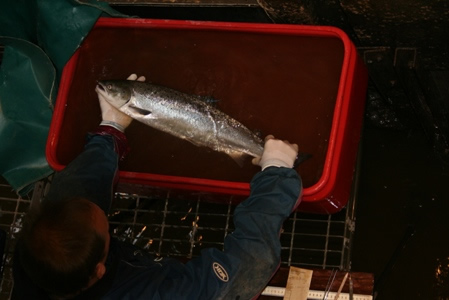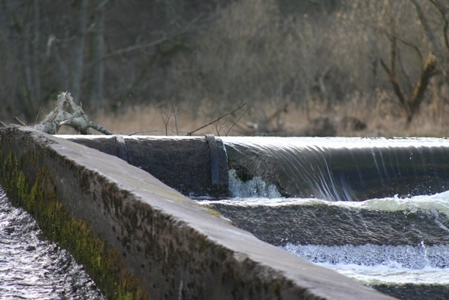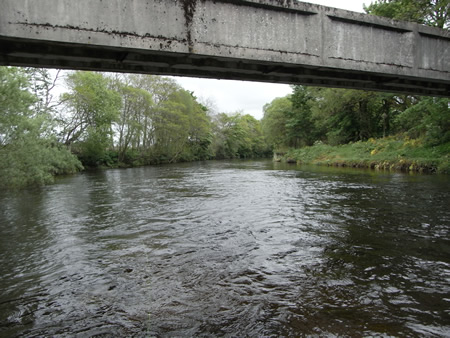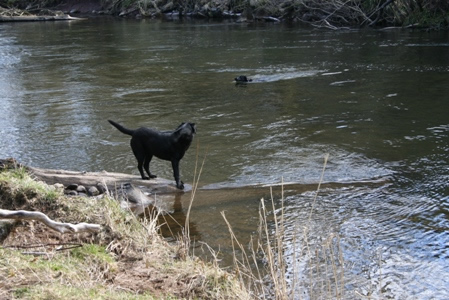These bulletin blogs represent news about Finavon and the South Esk, and my views as a riparian owner. They are not the views of any other organisation, nor are they designed to promote the interests of any individual or organisation other than Finavon Castle Water and factors affecting the fishery. Tony Andrews
Today I learned three things about the 2013 spring run in the South Esk.
While crossing the Haughs Aqueduct I looked down into the river and saw at least 10 fresh run salmon just upstream of the big boulder in the centre of the channel. They were jockeying for position in about 5′ of crystal-clear water, and they varied in size from about 6lbs to somewhere near 20lbs. This small shoal has been building up in this excellent salmon lie over the last few days. It is likely to disperse upstream when the river rises with the melting snow.
This photo is of the downstream slope of the Kinnaird Dyke which, over the years, has been the source of much controversy. In the mid 1990s a brilliantly simple adjustment was made to the fish pass, which unusually is positioned in the middle of the dam, as oppposed to the more normal position at one side of the structure.
Marine Scotland scientists have tagged and netted 22 salmon in the Arn Pool at Upper Kinnaird, 200 yards downstream of Kinnaird dyke. These salmon remain in the river, except two which have moved upstream above the dyke. Despite the unfriendly east wind more salmon have been netted and tagged in the Usan nets, two of which have entered the South Esk. It is not known how many of these fish have regurgitated their tags, if any.
While Upper Kinnaird continues to show encouraging catches – by far the best of both Esks – the numbers of salmon entering the North Esk, as recorded by the Logie counter, is lower than in recent years. At the same time the South Esk is showing a higher catch at Upper Kinnaird than for some years, most probably because of the very cold water temperatures inhibiting the passage of salmon through the Kinnaird dyke fish pass. If catches continue at the current rate, catch numbers at Kinnaird should exceed 50 salmon by the end of April.
The photo above shows the Haughs Aqueduct just downstream of which is the salmon lie referred to in this blog. On the 8th of April 2013 I saw about 10 fresh spring salmon lying in this great spring salmon lie.
I suppose I should offer a health warning for any unfounded speculation in this blog. I can however vouch for my impeccable source for the Marine Scotland report, and for my own observation of the salmon lying below the Haughs Aqueduct!
And the forecast is rain and a warm front, with southerly winds coming into the country from the west at the weekend. Maybe spring has arrived: about time too.
TA 8/4/2013
